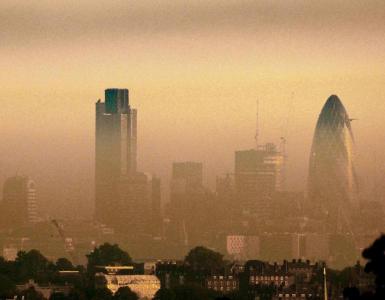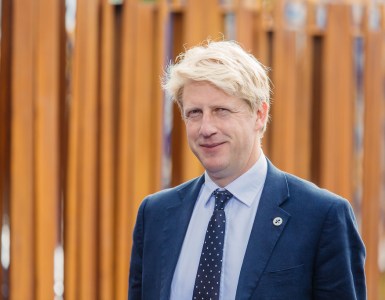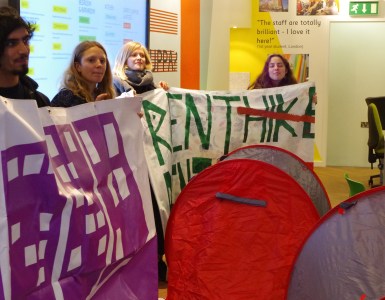It is no secret that transport is the biggest contributor to the invisible killer haunting our capital city – air pollution. Contributing to an estimated 40,000 deaths in the UK, it is clear that present and future transport plans must be reviewed to consider this environmental threat that has been looming over London for decades.
Despite this, just a few mere years ago, concerns over London’s increasing air pollution were discussed only in small pockets of groups within the city. But now, air pollution is a headline topic as an increasing number of the British population become aware of the risks.
With the election of the Labour Party’s Sadiq Khan as the Mayor of London, on 5 May 2016, London has seen a positive change in how environmental policies are prioritised. The previous Mayor, Boris Johnson MP from the Conservative Party, failed to address key environmental issues riddling the city.
Meanwhile, despite air pollution being a national, and global issue, the UK Government has failed to provide a national solution. Instead, they have opted to leave the responsibility to local authorities, who have struggled to collect sufficient data on air quality due to lack of resources resources and austerity cuts. In fact, Client Earth, a group of environmental lawyers, have taken legal action against the Government three times over ‘its persistent failure to deal with illegal air pollution across the country’, and has won their case previously.
The recently published ‘The London Plan’ (December 2017), a draft for public consultation, reveals some promising proposals for transport around London. These could green-light huge improvements in air quality. The plan makes references to the health risks that car dependency causes, and encourages cycling and other alternative methods of transport instead. Asthma, heart problems, stunted lungs are just a number of health problems professionals have highlighted as a direct consequence of the toxic levels of air pollution. Such health risks have been recorded from unborn babies all the way to affecting those in late adulthood. The Mayor of London suffers from adult on-set asthma himself.
The Transport section of the Plan (pages 401-438) opens up with an ambitious aim of making ‘80 per cent of all trips in London to be made by foot, cycle or public transport by 2041’ (page 402). Considering that London broke its air pollution records in just 5 days into 2017, the city may find it difficult to transition to such a change.
So how do the future plans for the transport of London facilitate this goal?
The plan plainly states that Londoners’ ‘dependency on cars’ must be reduced, otherwise the city ‘cannot continue to grow sustainably’ (page 402). Thus, there are pledges to invest in improving street environments to make walking and cycling ‘safer and more attractive’ options (page 402). A great emphasis has also been placed in investment into delivering ‘better quality public transport services’ to provide ‘accessible, affordable and appealing’ (page 403) alternatives to driving.
Despite TfL buses contributing a significant amount to air pollution, with the majority of them still running on diesel, they are still a far better option than cars. With more people using public transport, the city would see far less vehicles on the road. Diesel vehicles are the main culprit, accounting for almost 40% of the both NOx and the particulate PM10 London. Meanwhile, petrol cars are responsible for 7% of London’s NOx emissions and 16% of the particulate PM10.
Moreover, London’s iconic black cabs also add to the toxic air quality as they all continue to run on diesel. But, since December 2017, the first electric black cabs have been introduced in a bid to improve air quality. In addition, from January 2018, the introduction of new licensing requirements will mean a reduction of diesel taxis and instead an increase of Zero Emission Capable (ZEC) taxis.
In the context of government policies and the previous Mayor’s policies, Khan’s plans and views on tackling air pollution in London have been more promising. However, his progress, since his election, has arguably been stagnating. Many environmentalists feel that the Mayor is simply not doing enough and want to see more radical policies. But, Khan has been responsive to the non-violent direct action and other strategies that have been carried out by campaigning groups like Stop Killing Londoners and Mums for Lungs. And with the publication of the London Plan and the release of further plans, Khan appears to be trying to meet such demands.
The London Plan also features a strategy whereby the Mayor will work with London boroughs to deliver ‘a new London-wide network of strategic cycling routes’ (page 419), with TfL highlighting, in particular, outer London Metropolitan and major town centres routes as having a ‘high potential for a switch to cycling’. To make cycling a more attractive and inclusive option, the plan sets out to make cycle parking easier for disabled cyclists. Meanwhile, cycle parking at University campuses and schools are to be located ‘in close proximity to the entrance of all buildings to provide convenience and choice for users’ (page 419). It will be made easier for University students to own a bike as long-stay cycle parking in student accommodation is set to be doubled from one space per two bedrooms to one space per one bedroom.
Sadiq Khan has also set out other progressive plans including pledging to reduce car parks to encourage cycling and use of public transport. According to TfL’s new business plan for 2017-2023, cycling is estimated to rise by another 45 per cent. The ultra-low emissions zones are being brought up a year forward and also expected to be expanded. And air quality monitoring sites around London will see a dramatic increase to up to 1,000 locations.
So, while the Government remains to fail in addressing air pollution and other key national environmental issues, Sadiq Khan paves the way for a more radically greener capital city.
If you wish to comment on the Transport section, or any other section of The London Plan, you may respond to the consultation here by 5pm on 2nd March 2018.
Featured image: Evening Standard










Add comment